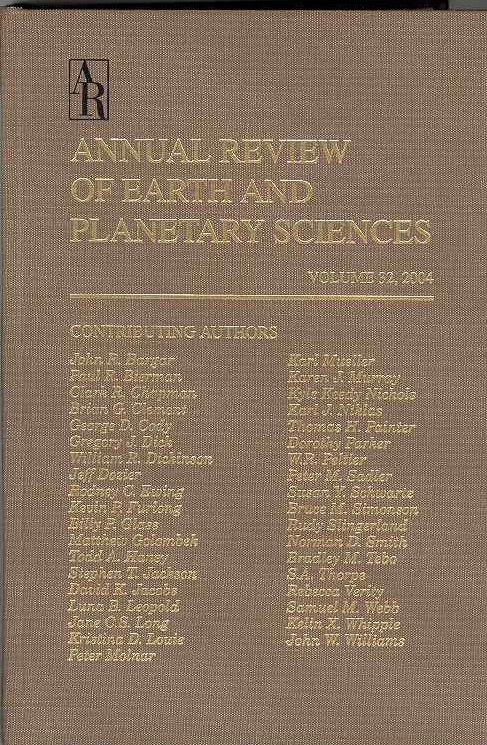太阳能地球工程的水文后果
IF 13
1区 地球科学
Q1 ASTRONOMY & ASTROPHYSICS
Annual Review of Earth and Planetary Sciences
Pub Date : 2023-02-07
DOI:10.1146/annurev-earth-031920-083456
引用次数: 2
摘要
随着大气中二氧化碳浓度的上升和气候变化的破坏性越来越大,地球工程已经成为一个值得认真考虑的课题。通过反射入射阳光的一小部分,太阳能地球工程可以迅速使地球降温,但对区域气候学,特别是水文模式的影响不确定。在这里,我们回顾了最近关于太阳地球工程预测水文结果的工作,在气候变化的水文响应的强大文献的背景下。虽然大多数太阳能地球工程方法预计将削弱全球水文循环,但区域影响将因实施方法和战略而异。关于地球工程的水文结果和影响的文献表明,它对人类福利的影响将取决于对潜在社会条件和干预目标的假设,以及对预测效果进行解释的社会视角。最后,我们提出建议,以减少决策相关的不确定性,在这个新的领域的地球科学调查。▪减少日照的预期水文效应是太阳地球工程最不确定和最重要的影响之一。▪广泛气候科学的理论框架可以帮助解释SG对全球降水、相对湿度和水文气候其他方面的影响。▪太阳能地球工程对水文影响的知识状况不均匀地集中在各区域之间。▪SG对水文的预估影响取决于情景,难以定性为有害或有益。《地球与行星科学年鉴》第51卷的最终在线出版日期预计为2023年5月。修订后的估计数请参阅http://www.annualreviews.org/page/journal/pubdates。本文章由计算机程序翻译,如有差异,请以英文原文为准。
Hydrological Consequences of Solar Geoengineering
As atmospheric carbon dioxide concentrations rise and climate change becomes more destructive, geoengineering has become a subject of serious consideration. By reflecting a fraction of incoming sunlight, solar geoengineering could cool the planet quickly, but with uncertain effects on regional climatology, particularly hydrological patterns. Here, we review recent work on projected hydrologic outcomes of solar geoengineering, in the context of a robust literature on hydrological responses to climate change. While most approaches to solar geoengineering are expected to weaken the global hydrologic cycle, regional effects will vary based on implementation method and strategy. The literature on the hydrologic outcomes and impacts of geoengineering demonstrates that its implications for human welfare will depend on assumptions about underlying social conditions and objectives of intervention as well as the social lens through which projected effects are interpreted. We conclude with suggestions to reduce decision-relevant uncertainties in this novel field of Earth science inquiry. ▪ The expected hydrological effects of reducing insolation are among the most uncertain and consequential impacts of solar geoengineering (SG). ▪ Theoretical frameworks from broader climate science can help explain SG's effects on global precipitation, relative humidity, and other aspects of hydroclimate. ▪ The state of the knowledge on hydrological impacts of solar geoengineering is unevenly concentrated among regions. ▪ Projected hydrological impacts from SG are scenario dependent and difficult to characterize as either harmful or beneficial. Expected final online publication date for the Annual Review of Earth and Planetary Sciences, Volume 51 is May 2023. Please see http://www.annualreviews.org/page/journal/pubdates for revised estimates.
求助全文
通过发布文献求助,成功后即可免费获取论文全文。
去求助
来源期刊

Annual Review of Earth and Planetary Sciences
地学天文-地球科学综合
CiteScore
25.10
自引率
0.00%
发文量
25
期刊介绍:
Since its establishment in 1973, the Annual Review of Earth and Planetary Sciences has been dedicated to providing comprehensive coverage of advancements in the field. This esteemed publication examines various aspects of earth and planetary sciences, encompassing climate, environment, geological hazards, planet formation, and the evolution of life. To ensure wider accessibility, the latest volume of the journal has transitioned from a gated model to open access through the Subscribe to Open program by Annual Reviews. Consequently, all articles published in this volume are now available under the Creative Commons Attribution (CC BY) license.
 求助内容:
求助内容: 应助结果提醒方式:
应助结果提醒方式:


